Destructive chewing in dogs is typically caused by boredom, anxiety, or teething. Chewing is instinctual and necessary, but we want to stop our dogs from chewing things they shouldn’t. So, let’s discuss 13 solutions for destructive chewing in dogs.
You can prevent destructive chewing by dog-proofing your home and giving your dog appropriate things to chew, like toys or treats. Make sure your dog is getting enough exercise and mental enrichment throughout the day. Talk to your vet if you suspect the destructive chewing is caused by an anxiety disorder.
In this article, we’ll talk about why dogs chew and how to stop destructive chewing in its tracks!
#1: Provide Durable Dog Toys

Dogs need to chew, so it’s important to provide them with chew toys.
©Valeriya Dzyuba/Shutterstock.com
First, you’ll want to look for durable dog toys that will last. This is easier for small dogs, but there isn’t a truly “indestructible” toy for large breeds–just toys that will last longer than others.
Make sure your dog’s toys aren’t shaped like the things you don’t want them chewing as well. For instance, don’t give your dog a shoe-shaped toy and expect them to know the difference between it, and your actual shoes.
#2: Give Your Dog Appropriate Things to Shred
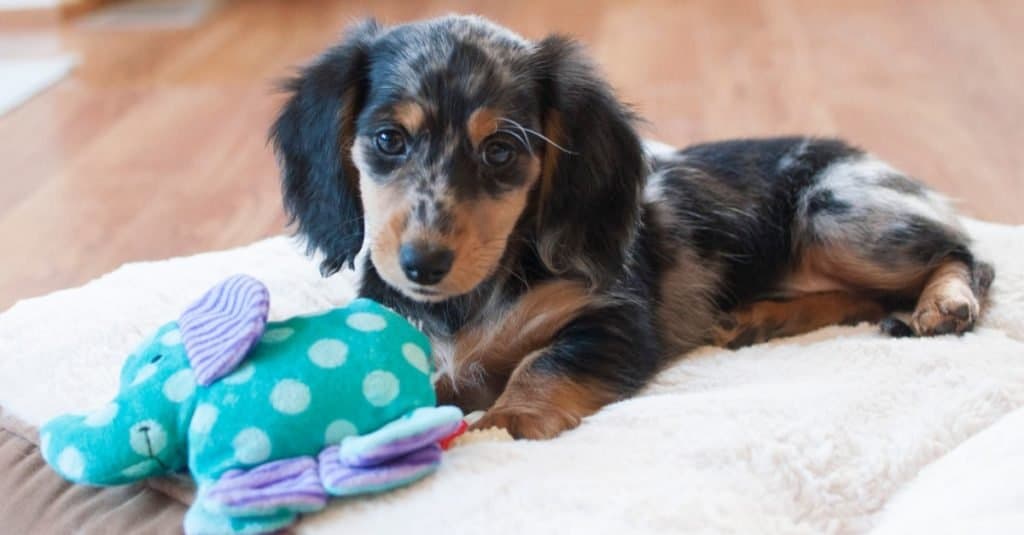
Allowing your dog to shred appropriate items is another way to keep them from tearing apart your things.
©Carolyn Dietrich/Shutterstock.com
I used to think it was a waste when my dog would shred things, but then a dog trainer put it into perspective for me. Shredding is an instinct for dogs because they’re a predator species–you have to tear apart your prey if you’re going to eat it!
Instead of expecting your dog to completely forego their instincts, try giving them safe and appropriate things to shred. I’ve seen people hide dog treats in a head of lettuce, for instance–it’s messy, but it’s safe and fun for your pup. Bonus points if they have that fun outside instead of in the living room!
If your dog doesn’t tend to eat the things they shred, you can also buy cheap toys for this purpose. Make sure to supervise your dog and throw away the shredded item once they’re finished chewing.
#3: Ensure They’re Getting Enough Exercise and Mental Enrichment
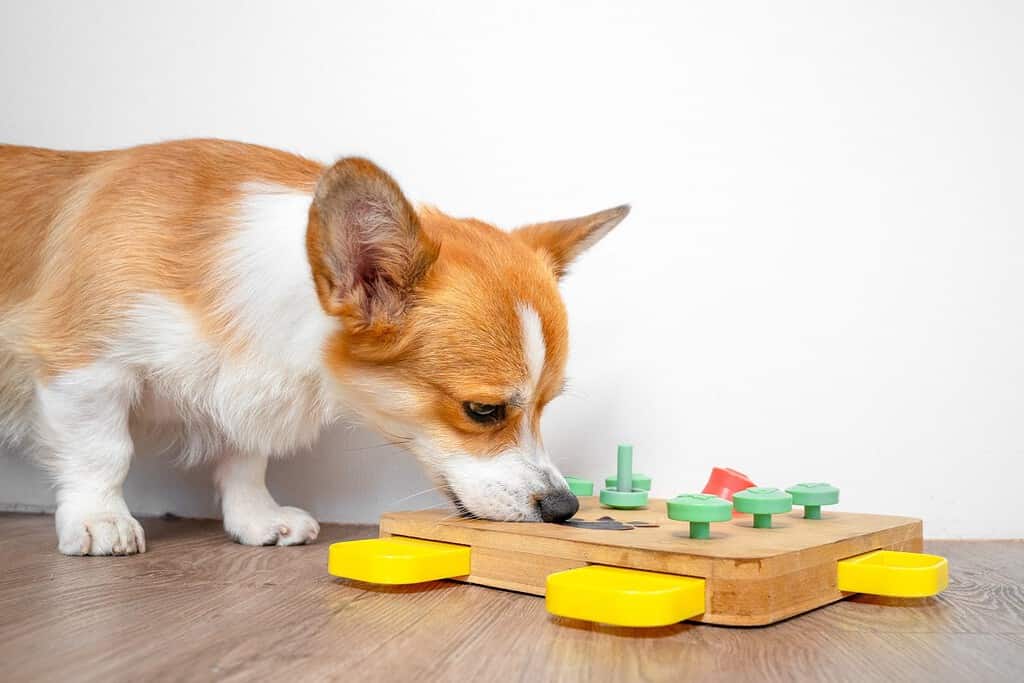
Many dogs who chew inappropriately are bored due to a lack of mental stimulation.
©Masarik/Shutterstock.com
A bored dog is more likely to engage in problem behaviors like destructive chewing. They aren’t trying to get back on you for skipping their morning walk–they’re simply looking for a way to burn off that energy!
Make sure you’re providing enough exercise for their breed, and also provide plenty of mental enrichment through training, games, and puzzle toys.
#5: Address Separation or Isolation Anxiety

Anxiety in dogs often causes misbehavior.
©Zontica/Shutterstock.com
If your dog tends to destroy things when you aren’t around, they may have separation or isolation anxiety. Work with your veterinarian and a force-free dog trainer or behaviorist to resolve the issue.
#6: Dog-Proof Your Home

Keep things your dog likes to chew put away so they can’t get to them.
©Prostock-studio/Shutterstock.com
While your dog learns what they can and can’t chew, it’s your job to make sure inappropriate items are well out of reach. Keep your belongings off the ground, secure any garbage cans so they can’t be dug through, and put away anything that could hurt your dog such as cleaning supplies or toxic plants.
#7: Provide Constant Supervision
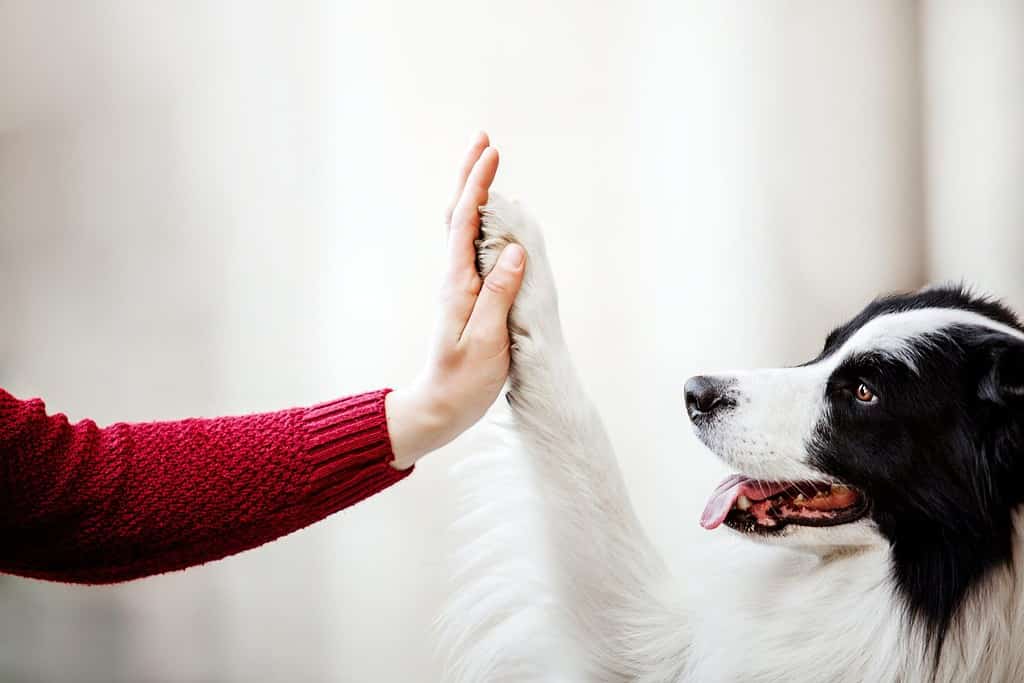
Keep an eye on your dog and stop destructive chewing before it happens.
©OlgaOvcharenko/Shutterstock.com
Since not everything can be removed from reach–like the couch or your walls, which some dogs are happy to gnaw on–you’ll also need to provide constant supervision until your dog learns what’s off-limits.
#8: Crate Train Your Dog
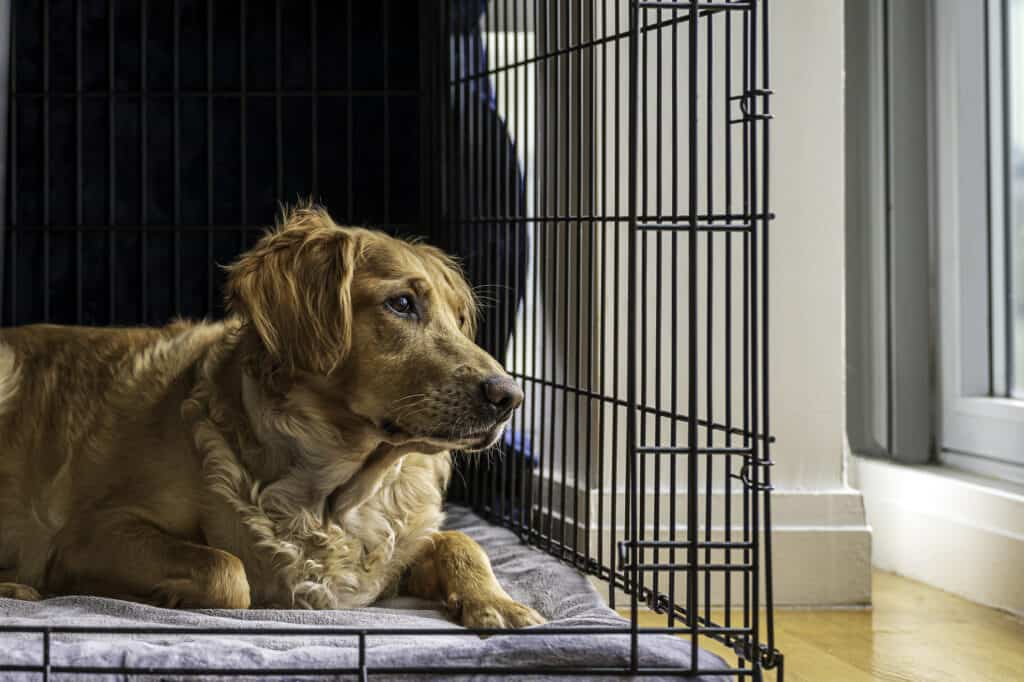
A crate can keep your dog safe from choking hazards and intestinal blockages due to destructive chewing.
©iStock.com/Christine McCann
When you can’t supervise your dog, consider crate training them. Crate training takes time, and doesn’t just mean putting your dog in the crate and letting them “cry it out.”
Instead, make the crate a fun space by playing crate games, feeding them inside, and never using it as a punishment tool.
#9: Keep Your Dog in a Dog-Proofed Room or Playpen While You’re Away
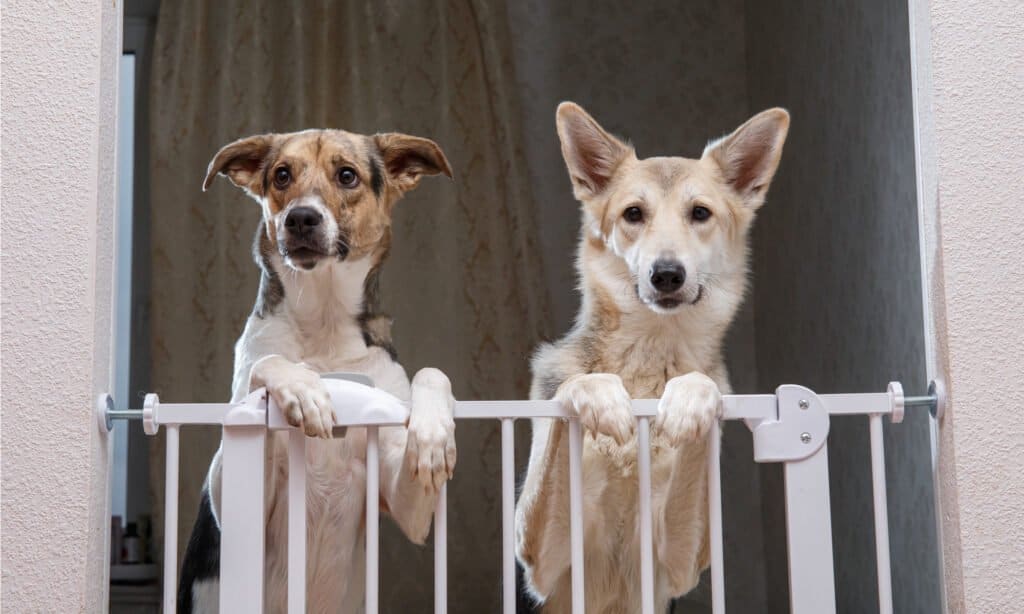
Baby or pet gates can be used to safely block off unsafe areas.
©Alex Zotov/Shutterstock.com
If you don’t like the idea of keeping your dog crated, you can also put them in a dog-proofed room or playpen when you can’t supervise them. This is ideal as it provides them with more space to move and play, while still keeping them and your belongings safe from harm.
#10: Redirect Your Dog to Toys
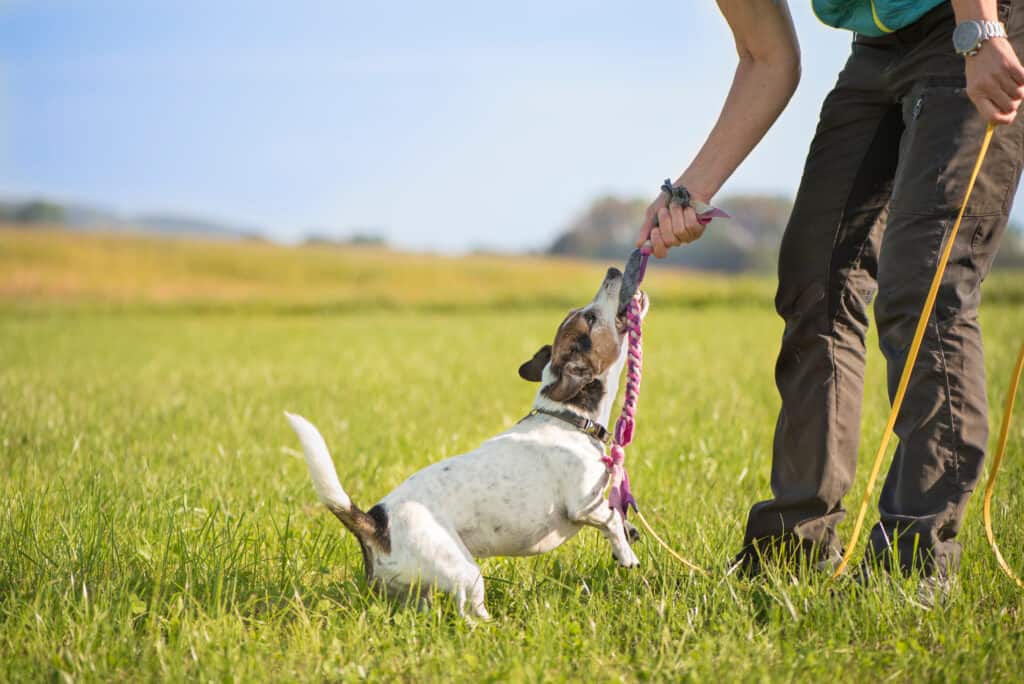
Keep toys on hand to redirect destructive chewing when needed.
©thka/Shutterstock.com
Whenever your dog chews something they shouldn’t, redirect them to their chew toys or a treat. You can also teach them to “trade” for a higher-value item.
Don’t chase your dog to retrieve an item from them, as most dogs will see this as a game. You also don’t want to pry their mouth open and force the item from them, as this can lead to a bite!
#11: Teach “Leave It,” “Drop It,” and “Trade”
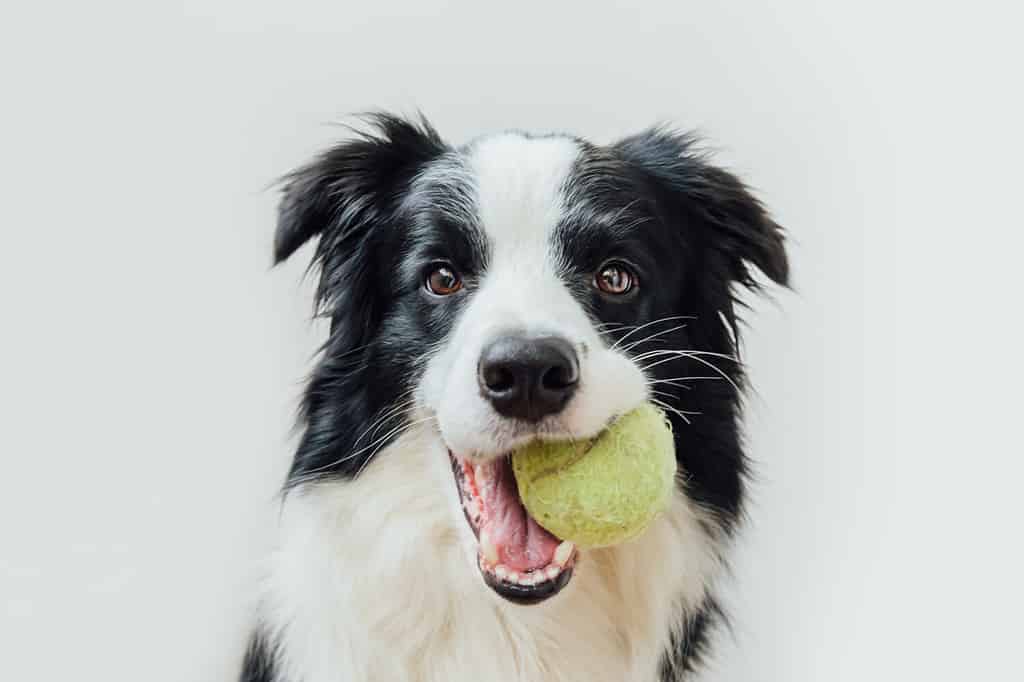
Cues like “drop it” are essential for all dogs but especially destructive chewers.
©Julia Zavalishina/Shutterstock.com
Training “leave it,” “drop it,” and “trade” commands helps to keep your dog safe when they pick up things they shouldn’t.
#12: Use Deterrent Sprays
Some items can be sprayed with deterrent sprays that taste bad when your dog puts their mouth on them. These are effective for many dogs, though some will ignore the taste or are unbothered.
#13: Never Punish Your Dog for Chewing

Punishing dogs for chewing does not work.
©Jaromir Chalabala/Shutterstock.com
Punishments tend to be ineffective for dogs, especially when you’re punishing natural behaviors like chewing. Your dog may not see the difference between chewing your things, and their toys–so, they don’t even know what they’re being punished for!
Punishments can also lead to or worsen anxiety. Since chewing is a great stress reliever for dogs, they may chew more as a result of being punished.
Instead of punishments, try force-free training techniques like those outlined above.
Thank you for reading! If you have feedback on this post, please contact the AZ Animals editorial team.
The photo featured at the top of this post is © Jaromir Chalabala/Shutterstock.com
Ready to discover the top 10 cutest dog breeds in the entire world?
How about the fastest dogs, the largest dogs and those that are -- quite frankly -- just the kindest dogs on the planet? Each day, AZ Animals sends out lists just like this to our thousands of email subscribers. And the best part? It's FREE. Join today by entering your email below.
Thank you for reading! Have some feedback for us? Contact the AZ Animals editorial team.







